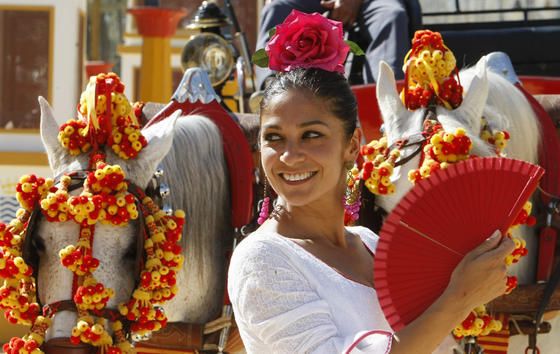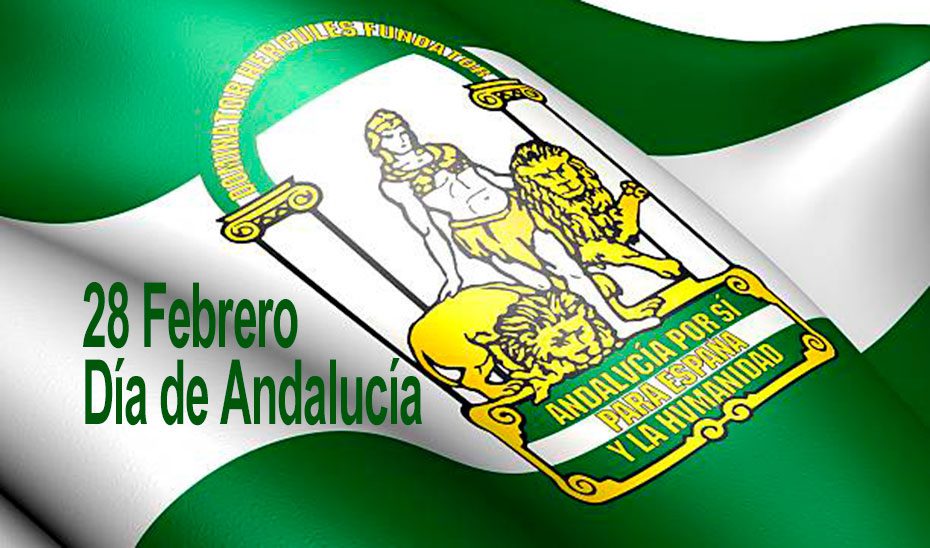Celebration of Andalucia Day on the 28th of February
Every year, the people of Andalucia commemorate Andalucia Day, also known as el Dia de Andalucia.
The challenging journey towards independence
Each year, on February 28th, the people of Andalucia come together to celebrate Andalucia Day, also known as el Dia de Andalucia. The green and white flags are proudly displayed on public buildings, as well as on houses and apartments. Festivities such as parades and street parties are organized in towns and villages across the region to honor the referendum held on February 28th, 1980. This referendum resulted in the adoption of the Statute of Autonomy of Andalusia, which granted Andalusia the status of an autonomous community within Spain. This was a significant achievement for the fiercely proud Andalucians, who had been struggling for autonomy from the central government in Madrid. This long and arduous journey began in 1479 when the Spanish territory was not truly united under one crown.

The Province That Has Been Overlooked
Despite being unified in 1479, the Spanish territory was a mix of different crowns, kingdoms, principalities, and dominions, each with its own legislative, judicial, and fiscal authority. They all had distinct customs, laws, and currencies, and some even had their own language. One particular territory, the Balearic Islands, was neglected and forgotten until 1588 when it was taken over by the Turkish Admiral Piyate Pasha. The islanders then turned to King Philip II of Spain for assistance in defending themselves against ongoing pirate attacks. This petition caught the attention of the crown, who realized that they were losing a potential source of taxes. As a result, the previously independent islands, albeit neglected, became part of Spain.
The Initial Conflict of the Carlist War
The ruling class in Spain, which consisted of wealthy landowners, were hesitant to give up their power and wealth. Until the 1800s, neither the monarchy nor the central government had enough strength to challenge the established noble families, the Catholic Church, and elements of the military. It was not until 1833 that Spain was divided into 49 provinces (now 50), but this was mainly a means to impose centralized policies from Madrid. This decision ultimately contributed to the First Carlist War (1833-1840), which, according to historian Bradley Smith, was not primarily fought over the legal claim of Don Carlos (who sought to claim the throne after the death of his brother King Ferdinand VII in 1833), but rather because a passionate group of Spaniards desired a return to absolute monarchy in order to protect their individual freedoms (fueros), regional identities, and religious beliefs.
Instability in Politics
For the next eighty years, the political landscape in Spain was unstable as various political groups, ranging from the extreme left to the extreme right, vied for control. Their efforts to establish order in Spain were often hindered by a hereditary monarch who alternated between absolute and liberal rule, as well as a nobility that clung to their power and privileges in a feudal society. Meanwhile, in northern Europe, the industrial revolution was in progress. On the international front, Spain's colonial territories were being lost, along with the revenue they generated, at a faster pace than any other empire before or after. Economically, Spain fell further behind other European nations.
During the time before the outbreak of the First World War, Spain experienced two additional civil wars: the Second Carlist War from 1846 to 1849 and the Third Carlist War from 1872 to 1876. The country's form of government changed from the absolute rule of Ferdinand VII to the constitutional monarchy of Isabella II, followed by an elected monarchy under Amadeo I. There was a brief period of republicanism from 1873 to 1874 with no monarch, before returning to a constitutional monarchy under the rule of the House of Bourbon.
Despite the passage of time, the idea of self-governing regions remained intact.
Blas Infante Perez de Vargas - The Founder of Andalucia
In 1913, a politician named Blas Infante Perez de Vargas, who was born in Casares, Malaga province, and would later be recognized as the "Father of Andalucia", organized a gathering in Ronda. During the assembly, they adopted a constitution inspired by the autonomist "Constitucion Federal de Antequera", which was originally written in 1883 during the First Spanish Republic. Infante also unveiled the unique Andalucian flag and an emblem for the region, featuring the Pillars of Hercules, which he personally designed.
Infante led the Junta Liberalista, a federalist political party that represented Andalucismo during the Second Spanish Republic (1931 - 39).
Restricted Independence for Certain Individuals
In 1914, the Commonwealth of Catalonia was granted limited autonomy, but it was later abolished in 1925. However, during the Second Republic in 1932, it was granted once again. The Constitution of 1931 established the concept of dividing Spain into "autonomous regions". By the outbreak of the Spanish Civil War in 1936, only three regions - Catalonia, Galicia, and the Basque Country - had officially approved "Statutes of Autonomy".
In the year 1936, when Franco's forces captured Seville, Blas Infante, along with a group of other political leaders, was put to death.
The Reign of Franco
Until the conclusion of the Civil War in 1939, Franco imposed Martial Law and subsequently established a dictatorial government until his passing in 1975. During his rule, strict centralism was enforced in order to maintain the "unity of the Spanish nation". In 1939, the Generalitat of Catalonia was dissolved and its president, Lluis Companys, was subjected to torture and eventually executed on October 15, 1940 on the charge of "military rebellion".
Following the death of Franco in 1975, Spain underwent a period referred to as the 'transition towards democracy'. In 1977, the Cortes Generales, a government elected through democratic means, acted as a Constituent Assembly to guide Spain's shift from a centralized state to a decentralized one. This ultimately resulted in the Constitution of 1978 and the subsequent Referendum of the Andalucian people in 1980. As a result, Andalucia was granted autonomy through the 1981 Statute of Autonomy, also known as the 'Estatuto de Carmona'.
Independence for Andalucia
According to Article 1 of the 1981 Statute of Autonomy, the rationale for autonomy is rooted in the region's historical identity and the Constitution's allowance for self-governance for all nationalities. This autonomy also entails equal status with other Spanish nationalities and regions, as well as a governing power derived from the Andalusian Constitution and its people, as stated in its Statute of Autonomy.
The Failed Attempted Coup of 1981
The events that took place on February 28, 1981 were a tense and narrow escape. It was exactly one year after the referendum in Andalucia when Lieutenant-Colonel Antonio Tejero, accompanied by 200 armed Civil Guard officers, entered the Congress of Deputies during the vote for the election of a President of the Government. This was known as the attempted coup d'etat of 1981, where the army and far right groups attempted to establish a government that would centralize Spain once again. However, the coup was prevented by the intervention of King Juan Carlos, who believed that his military leaders were loyal to him and the Constitution. This intervention ultimately saved Andalucia from being suppressed.
Andalucia's Autonomy Statute
The 1982 Statute of Autonomy for Andalucia, article 3, declared that Andalucia would possess its own symbol, officially approved by its Parliament. The emblem would bear the inscription "ANDALUCÍA POR SÍ, PARA ESPAÑA Y LA HUMANIDAD" (Andalusia by herself, for Spain and for Humankind), in accordance with the resolution passed by the Assembly of Ronda in 1918.
In the course of almost five centuries, Spain evolved from a feudal state with decentralized rule by different nobles, some of whom were loyal to the crown and others who were not, to a centralized government under Franco, and ultimately to the current decentralized autonomous communities. The introduction of the Autonomous Communities marked a significant shift for Spain, transforming it from one of the most centralized nations in the world to one of the most decentralized. It comes as no surprise that this event is commemorated in Andalucia.
Check here if you want to look at different properties in Costa Del Sol


